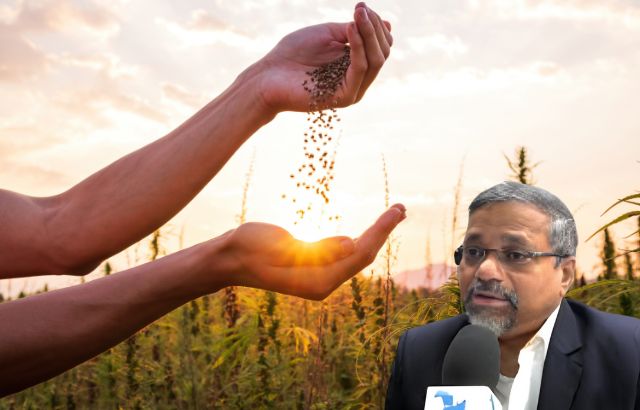In the modern agricultural landscape, optimizing resource use is crucial for achieving sustainable and efficient farming practices. As a green innovator in agriculture, understanding resource efficiency can transform how we approach farming, leading to increased productivity, reduced waste, and a healthier environment. Let’s delve into how resource efficiency analysis can revolutionize agriculture and explore practical examples and analogies to illustrate these concepts.
What is Resource Efficiency?
Resource efficiency refers to the optimal use of resources—such as water, soil, and energy—to maximize productivity while minimizing waste and environmental impact. Think of it as fine-tuning an orchestra; every instrument (or resource) needs to play its part perfectly to create a harmonious and efficient performance.
Why is Resource Efficiency Important in Agriculture?
Agriculture relies heavily on various resources, and inefficient use can lead to significant environmental and economic consequences. For instance, excessive water usage can deplete local water supplies, while overuse of fertilizers can lead to soil degradation. By optimizing resource use, farmers can reduce costs, enhance crop yields, and contribute to environmental conservation.
1. Water Management: Precision Irrigation

The Analogy: A Surgical Precision
Imagine water management in agriculture as performing a delicate surgical procedure. Just as a surgeon uses precise tools to target a specific area, precision irrigation systems apply water directly where it’s needed. This minimizes waste and ensures crops receive the optimal amount of water.
Practical Example
Drip irrigation is a prime example of precision irrigation. Unlike traditional methods that flood entire fields, drip systems deliver water directly to the plant roots through a network of tubes and emitters. This approach can reduce water usage by up to 50% and increase crop yields by ensuring that each plant gets the right amount of hydration.
2. Soil Health: Organic Fertilization

The Analogy: A Balanced Diet
Consider soil health like maintaining a balanced diet. Just as our bodies need a variety of nutrients to function optimally, soil requires a mix of organic matter and nutrients to support healthy plant growth. Over-reliance on synthetic fertilizers can disrupt this balance, leading to poor soil health and reduced productivity.
Practical Example
Using compost and green manures as organic fertilizers can enhance soil fertility and structure. For example, incorporating composted vegetable scraps and manure into the soil can improve its nutrient content and water retention capabilities. This not only reduces the need for chemical fertilizers but also enhances the overall health of the soil.
3. Energy Efficiency: Renewable Energy Integration

The Analogy: Harnessing the Sun’s Power
Energy efficiency in agriculture can be likened to harnessing the sun’s power. Just as solar panels capture and convert sunlight into usable energy, integrating renewable energy sources into farming operations can reduce reliance on fossil fuels and lower energy costs.
Practical Example
Solar-powered water pumps are an excellent example of renewable energy integration in agriculture. These pumps use solar panels to power irrigation systems, reducing the need for diesel or electric pumps. This not only cuts energy costs but also reduces the carbon footprint of farming operations.
4. Waste Reduction: Circular Agriculture

The Analogy: A Recycling Loop
Think of waste reduction in agriculture as a recycling loop. Just as recycling turns waste into new products, circular agriculture aims to minimize waste by reusing and recycling agricultural by-products. This approach reduces the need for external inputs and supports a more sustainable farming system.
Practical Example
In circular agriculture, crop residues, such as stalks and leaves, are reused as animal feed or compost. For instance, after harvesting corn, the husks and cobs can be repurposed as livestock feed or composted to enrich the soil. This practice reduces waste and recycles nutrients back into the agricultural system.
5. Technology Integration: Smart Farming

The Analogy: A High-Tech Navigator
Technology integration in agriculture can be compared to using a high-tech navigator for a road trip. Just as a GPS provides real-time updates and directions to optimize your journey, smart farming technologies offer data-driven insights to optimize resource use and improve decision-making.
Practical Example
Precision agriculture technologies, such as GPS-guided tractors and drones, help monitor crop health and manage field operations with high accuracy. Drones can assess crop conditions and identify areas needing attention, while GPS-guided tractors ensure efficient use of resources by accurately applying inputs where they are most needed.
Conclusion
Resource efficiency analysis is essential for optimizing resource use in agriculture, leading to more sustainable and productive farming practices. By adopting precision irrigation, enhancing soil health with organic fertilizers, integrating renewable energy, reducing waste through circular agriculture, and leveraging smart farming technologies, farmers can achieve significant improvements in efficiency and sustainability.
As green innovators, embracing these strategies not only benefits individual farms but also contributes to a more sustainable agricultural system. Implementing these practices will help ensure that farming remains productive and environmentally friendly for generations to come.
Call to Action: Ready to optimize your agricultural practices? Start implementing resource efficiency strategies today and join the movement towards sustainable farming.












